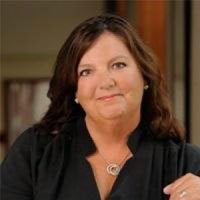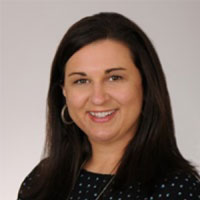How NPs Help Children & Youth in Foster Care
Nursing Colleges Search
When you click on a sponsoring school or program, or fill out a form to request information from a sponsoring school, we may earn a commission. View our advertising disclosure for more details.
“It’s really up to us, as NPs, to look at what the evidence is showing us about what’s happening to our youth, so we can play a key role in keeping them healthy, both from a physical standpoint and the standpoint of behavioral and mental health.”
Brigit VanGraafeiland, DNP, Chair of the Alliance for Children in Foster Care, Associate Professor in Johns Hopkins School of Nursing
Advocacy is woven deeply into the nurse practitioner (NP) role. It’s a part of the job that’s never finished. Advocacy can occur at a micro level, by advocating one-on-one for a particular patient, or at the macro level, by lobbying for policy changes; it’s often a mix of the two. For many NPs, advocacy concerns an issue close to their heart, one connected to underserved patients who deserve additional support. For Brigit VanGraafeiland, DNP, and Tracy Halasz, CPNP the issue is children and youth in foster care.
Foster care is designed to provide a temporary, safe, and nurturing environment for children and youth who cannot live with their biological families due to safety concerns, parental illness, abuse, neglect, and other challenges. Those children and youth often face complex physical, emotional, and psychological needs, many of which stem from the same factors that contributed to their arrival in foster care. NPs, with their holistic approach, are well-suited to help.
May is National Foster Care Awareness Month. It’s a time to raise awareness regarding the more than 368,530 American children and youth in foster care and to explore the unique ways in which NPs are equipped to help them, both through advocacy and practice. To learn more, read on.
Meet the Experts

Brigit VanGraafeiland DNP, CRNP, FAAN
Dr. Brigit VanGraafeiland is chair of the Alliance for Children in Foster Care. She is also an associate professor and associate director of the DNP executive track at Johns Hopkins School of Nursing.
Dr. VanGraafeiland has been a pediatric nurse practitioner for 33 years and a nursing educator for over 20 years in undergraduate, graduate, and doctoral programs. She has practiced extensively in rural and urban primary care settings, serving vulnerable youth.
Dr. VanGraafeiland’s scholarship focuses on improving outcomes for children in foster care, child maltreatment, human trafficking, trauma-informed care, and adverse childhood experiences.

Tracy Halasz, CPNP, PMHS
Tracy W. Halasz is the co-chair of the National Association of Pediatric Nurse Practitioners (NAPNAP) Partners for Vulnerable Youth Alliance for Children in Foster Care. She is also a pediatric nurse practitioner with a primary mental health specialist certification at the Medical University of South Carolina in Charleston, South Carolina.
Halasz has been a nurse practitioner for 16 years with experience in primary care with an emphasis on care for children in foster care and behavioral-mental health, as well as experience in forensic medical evaluations for children suspected of child maltreatment.
Halasz has been actively involved with the South Carolina Foster Care Advisory Committee and advocating for children in foster care in South Carolina. Her scholarship has focused on foster care youth, adolescent health, telehealth, and mental health. Halasz will complete her DNP degree in May 2024 from Old Dominion University. She also serves as the NAPNAP representative for the American Academy of Pediatrics (AAP) Trauma-Informed Strategic Planning Committee.
VanGraafeiland and Halasz spoke to NursingColleges.com in 2024.
The Unique Needs of Children & Youth in Foster Care
“Children in foster care are a special needs population,” Halasz says. “They have increased risk for chronic physical conditions, as well as mental health conditions and learning and educational needs—all of which is complicated further by their trauma histories.”
Many children in foster care have faced some form of mistreatment, whether that’s abuse or neglect. They might have been exposed to domestic violence or substance use. And foster care itself can be a challenging environment: it can range from a foster home with two caregivers for one foster child all the way to a group home shared with many other youths.
“When children are removed from their homes and placed in a new environment, it can be challenging,” Halasz says. “And that is often compounded by multiple placement changes, leading to fragmented healthcare.”
Fragmented care is particularly problematic when dealing with such a vulnerable patient set. Children who are or have been in foster care are significantly more likely than the general population to have multiple Acute Childhood Experiences (ACEs), traumatic events that happen between the ages of one and 17. They are seven times more likely to have anxiety and five times more likely to have depression. As many as a third have a chronic medical problem.
“This is a vulnerable population that needs extra attention, extra guidelines, and extra care,” Halasz says.
The Alliance for Children in Foster Care
The mission of the Alliance for Children in Foster Care is to nurture a sense of belonging, connection, and safety for children in foster care. The Alliance is part of the NAPNAP Partners for Vulnerable Youth, which also includes the Alliance for Children in Trafficking and the Alliance to Prevent Youth Suicide.
“These alliances come from looking at what the evidence says about the issues that are most concerning to our youth today,” Dr. VanGraafeiland says. “Children cannot vote, so they have no voice unless advocates and organizations give them a voice. NPs are the ideal advocate.”
Established in 2017, NAPNAP Partners for Vulnerable Youth is a 501(c)(3) organization dedicated to improving the physical and mental health and well-being of vulnerable infants, children, adolescents, and young adults. This may include involvement with lobbying, policy initiatives, and fundraising. And while each Alliance is distinct from the others, there’s significant overlap between them: data suggests that between 50 and 90 percent of child sex trafficking victims have a history of placement in the foster care system.
“One thing NAPNAP Partners has been focused on in the last few years is making sure, as we’re each getting up and running with our individual strategic plans, we’re also collaborating,” Halasz says.
The Alliance’s strategic plan, developed by Halasz and Dr. VanGraafeiland, has three priorities:
- Evidence-based practice (threading trauma-informed care throughout America’s pediatric offices)
- Prevention and health promotion (getting to the root causes of why children and youth end up in care, such as parental substance use, and looking for ways to prevent that)
- Advocacy and policy (using organizational resources to disseminate data and lobby for impactful legislation)
“Our alliance really starts at the grassroots level, with getting pediatric NPs all on the same page when it comes to children and youth in foster care,” Dr. VanGraafeiland says. “There’s still a lot of disconnect between what providers know and what children and youth in foster care need.”
To assess and address that disconnect, the Alliance disseminated a survey to all of NAPNAP’s 8,000 members. The survey sought to identify the gaps in knowledge NPs face when dealing with children and youth in foster care. Building off the findings from that survey, the Alliance recently launched its first training for advanced practice providers on the special needs of children and youth in foster care. The hope is that those providers will take what they learn back to their communities and, in turn, train others.
“It’s all about evidence-based practice and education,” Dr. VanGraafeiland says. “We hope to advocate through informing providers across the country what the best standards are and what the best evidence is to care for youth in foster care.”
How NPs Can Make a Difference
Nurse practitioners are some of the best people to be working with vulnerable youth. The NP’s holistic approach and developmental expertise are immensely valuable. NPs also enjoy high levels of trust, which can be a boon when treating children and youth in foster care.
“With kids in foster care, the more you talk to them, the more things you learn are going on,” Halasz says. “A lot of times, it’s not a quick, easy visit. When we see youth in foster care, we usually recommend doing so in a two-part series: there’s the time they first come in for an initial assessment, and then in the month or so after, we’ll provide a comprehensive care visit.”
That level of access and that amount of time are not available to all healthcare professionals. But they’re available to many NPs, and it’s part of what makes NPs the prime providers for children and youth in foster care. Pediatric NPs are also experts in child development and attachment; they can share that expertise in collaborating with other elements of the foster system.
Lack of collaboration between different elements of the foster care system is an ongoing challenge. NPs can be an important bridge between social workers, social services, judges, families, and youth. NPs can be advocates for their patients and help translate the type of care already received and the type of care that may soon be needed afterward. They can also be a critical point of continuity in the often-segregated worlds of social service and healthcare and act as an anchor amidst the transient nature of foster placements.
“Not everyone understands the same healthcare language,” Dr. VanGraafeiland says. “Having a pediatric NP embedded within the Department of Social Services would be very beneficial.”
A PNP embedded within the DSS would be particularly valuable when it came to intake exams. Intake exams occur when a child is removed from a home: upon removal, the child needs to have a physical exam to assess their baseline physical and mental health. Having an NP able to do that in a timely manner would be a big help.
“We can’t just have the burden fall to social workers, caseworkers, and judges,” Dr. VanGraafeiland says. “The burden also falls to healthcare providers. I think we need to become much more active, and bring the best evidence to the table, to hopefully mitigate the risks and optimize the outcomes.”
The Advocacy Journey
Halasz’s journey into advocacy started right out of nursing school, after she finished her BSN when she volunteered at a child advocacy center. That first volunteering experience was focused mainly on the playroom, entertaining kids while they waited for forensic evaluations or medical examinations. It stuck with her.
After going back to school, her first job as an NP was with the same advocacy center—but this time, as a pediatric provider for vulnerable kids. That led her to the area of foster care, and her involvement only increased: getting on related committees first at the state and then the national level.
“I think if you find what you’re passionate about, opportunities come to you, and you find your path,” Halasz says.
For Dr. VanGraafeiland, who’d always wanted to work with an underserved population, the path started at her first job in Buffalo, where she realized just how impactful social determinants of health could be in the lives of children, contributing heavily to whether they stayed in their biological homes.
After Buffalo, she spent five years in solo practice in rural North Carolina, then moved to Maryland and practiced in Baltimore City, where gaps in care for children and youth in foster care became even more stark. Her doctoral education focused on how healthcare providers document the needs of youth in foster care, and she developed a template tool to facilitate collaboration between NPs, healthcare providers, and social services. Much of her advocacy has relied on the power of simple but intelligent and compassionate questions.
“It’s so important to ask different questions when caring for a youth in foster care,” Dr. VanGraafeiland says. “Do they see their siblings? What number home is this for them, their first or their fifth? There are implications for healthcare, developmental, and mental health needs. But until you understand the evidence, you might not think to ask these questions.”
After earning her DNP, Dr. VanGraafeiland continued her research, going on to speak at national conferences and help write position statements related to vulnerable youth. And more recently, she went through extensive training and court-approval to become a court-appointed special advocate (CASA), a non-healthcare role completely distinct from that of an NP. CASAs are assigned to an individual child or youth in foster care, seeing them on a regular basis, monitoring their progress outside of the biological home, and making recommendations to the court. It’s afforded her a whole new perspective on the system.
“As a CASA, I’m not looking at it from the lens of the family, or the lens of a social worker, or even the lens of a healthcare provider—although it does help, given my background,” Dr. VanGraafeiland says. “I’m really advocating for and looking at it through the lens of the child, and what the child needs.”
The Future of Foster Care
The future of foster care will be decided, in part, by NPs and other advocates. The centralized approach of the Alliance and NAPNAP Partners can bring powerful resources to bear. But spreading awareness—both about the unique needs of children and youth in foster care, and about how healthcare providers can better address them—remains one of the most important acts of advocacy.
“An ideal future would be one where all children and youth in foster care can get trauma-informed care, and they can get that care in a way that is thoughtful,” Halasz says. “An ideal future is one where people understand the needs of this special population.”
A collective approach can yield powerful results. The national scope of NAPNAP Partners and the Alliance for Children in Foster Care helps address some of the fragmentary aspects of state foster care systems. Meanwhile, state chapters of NAPNAP offer valuable resources for pediatric NPs interested in advocacy. Even just becoming a member of their state chapter, joining the continuing education (CE) events, and getting more awareness of what’s taking place legislatively puts them at an advantage. Together, the collective voice of informed NPs can speak loudly in support of the nation’s children and youth in foster care.
“It’s really up to us, as NPs, to look at what the evidence is showing us about what’s happening to our youth, so we can play a key role in keeping them healthy, both from a physical standpoint and the standpoint of behavioral and mental health,” Dr. VanGraafeiland says.

